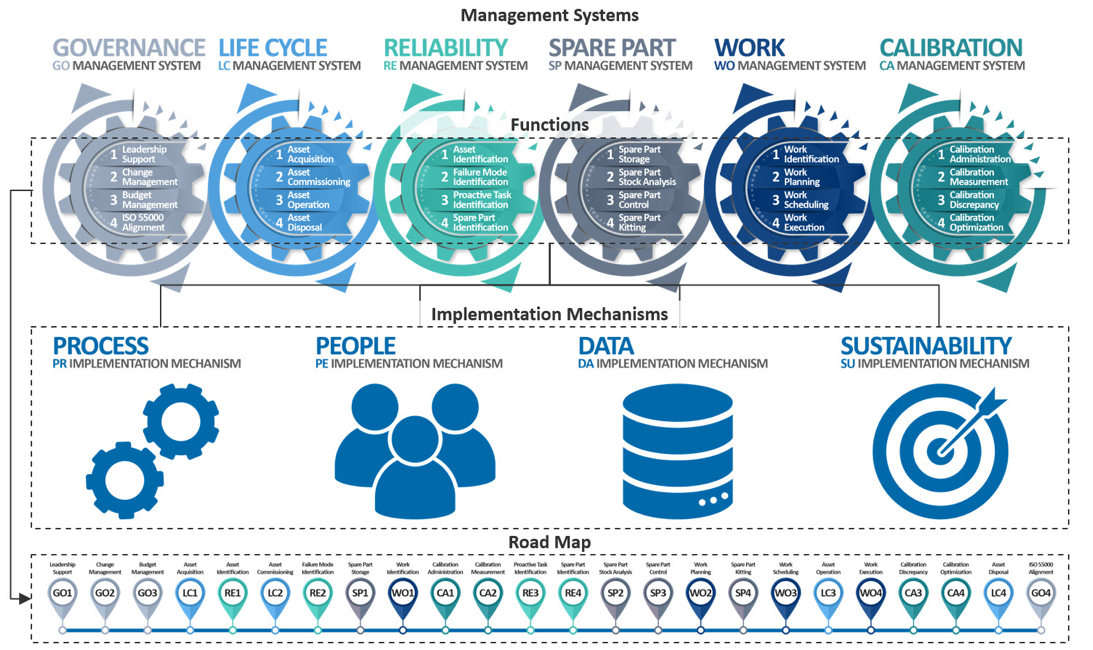
This overview is intended to introduce the Asset Management Framework and provide definitions specific to each Function and Process for initial terminology and scope familiarization. Below is the Asset Management Framework. The framework is a representation of all the parts and pieces of an Asset Management Program, and how those parts and pieces are organized.

The Asset Management Program is implemented through six Management Systems, which are Governance, Life Cycle, Reliability, Spare Part, Work, and Calibration. All Management Systems contain four Functions, each Function focused on one aspect of the overall Management System. Each Function has four Implementation Mechanisms, each focused on one aspect of how the Function is executed.
Process is the guiding methodology for how the Function will be performed. People represent the responsibility assignment and required training for each Process. Data is the information the People utilize to drive daily Process operation and decision making. Sustainability represents the metrics that measure Data to indicate Process health and standards which ensure performance repeatability of People.
The Road Map at the bottom provides a sequential implementation path, indicating the order in which Functions are typically developed and implemented when building an Asset Management Program. It also serves to identify Functions that require attention as a result of a gap analysis performed on existing Asset Management practices.


